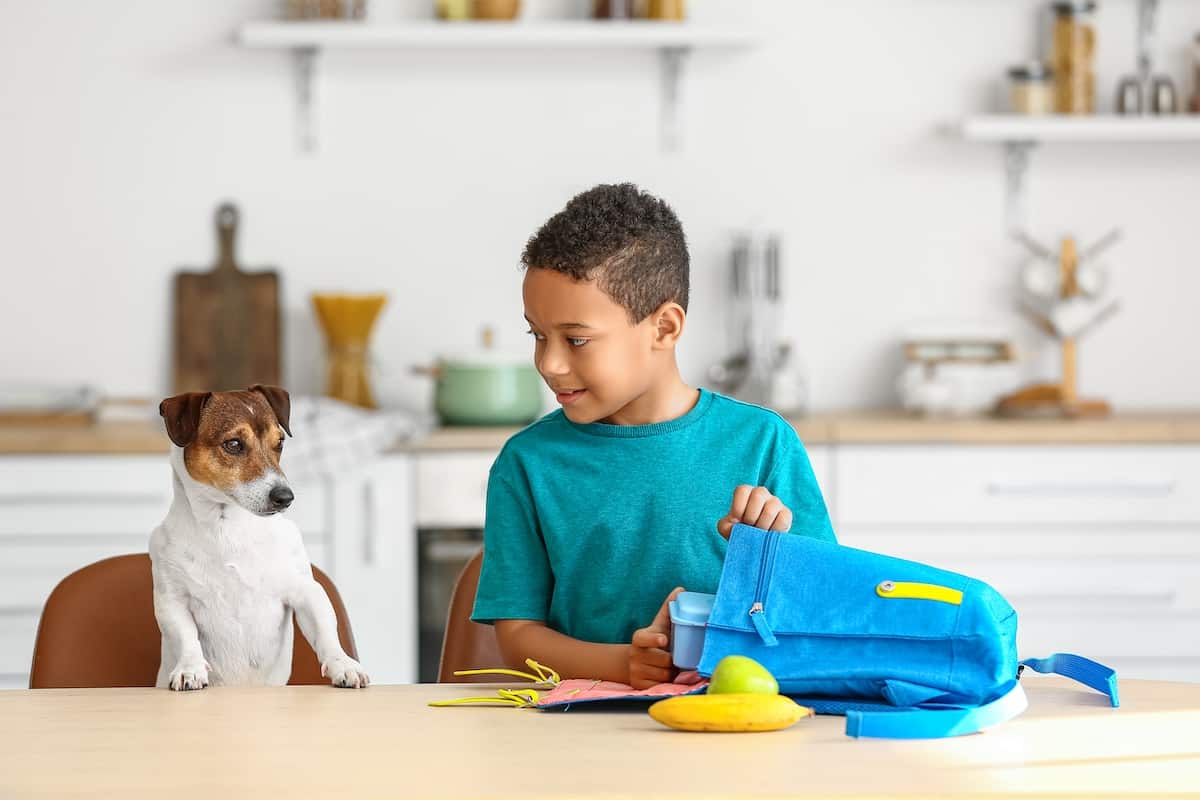Back to School Separation

As the summer draws to a close, students prepare to return to school for another academic year. While this transition can be exciting for humans, it can often lead to a significant change in routine for our pets, leading to them experiencing separation anxiety. Many pet owners have experienced varying degrees of separation anxiety from mild cases may include excessive barking, whining, or scratching at doors or windows. Pets with moderate separation anxiety may exhibit destructive behavior, such as chewing furniture, digging holes, or tearing up household items. In severe cases, pets may excessively pace or drool, or even become aggressive.
One of the primary causes of separation anxiety in pets with back to school is the sudden change in routine. Throughout the summer, when students are home for longer durations, pets become used to having their owners around throughout the day. The constant presence of someone to interact with and provide attention creates a sense of security for pets. However, as the academic year begins, the children are gone and many owners suddenly find themselves away from home for extended periods for kids activities in addition to work and daily living, leaving their pets feeling lonely and anxious. Although we might be planning the start of school for weeks, for our pets this feels like a sudden absence and can trigger separation anxiety in some pets, as they struggle to adjust to the new routine.
To address separation anxiety in pets with the return to school, there are several strategies that pet owners can employ. Firstly, gradually transitioning back to the normal routine can help pets adjust more easily. Providing short periods of separation and gradually increasing the duration over time allows the pet to acclimate to the change. Additionally, ensuring pets receive ample exercise and mental stimulation before being left alone can help calm their nerves. A tired pet is more likely to be content and relaxed in their own company. Engaging toys that provide food rewards or comforting scents can also keep pets occupied and ease their anxiety during time alone.
Another potential strategy is counter-conditioning, which involves associating the owner’s departure with positive experiences. Simple actions such as offering treats or engaging in playtime before leaving can teach pets to associate their owner’s absence with pleasurable experiences. Establishing a designated safe space or den-like area can also provide a sense of security and minimize feelings of anxiety. Creating a space with comfortable bedding, toys, and familiar scents can provide a safe haven for the pet when their owners are away.
Seeking professional help from a veterinarian or animal behaviorist can be beneficial for more severe cases of separation anxiety. These experts can provide additional guidance and potential interventions to address the pet’s anxiety effectively. Medication may also be prescribed in severe cases to alleviate anxiety and provide temporary relief during the transition period.
The return to school can be a distressing time for many pets, leading to separation anxiety. Understanding the causes and effects of this condition is crucial for pet owners to provide the best care and support for their furry companions. By gradually transitioning back to the normal routine, providing mental and physical stimulation, using counter-conditioning techniques, and seeking professional help when necessary, pet owners can help alleviate separation anxiety and ensure their pets remain happy and healthy during the back-to-school period.


